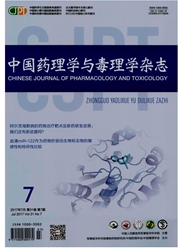

 中文摘要:
中文摘要:
ObjectiveTo 侧面特定的长 noncoding RNA ( lncRNAs )和竞争内长的 RNA ( ceRNA )肝炎 B 病毒( HBV )联网的肝癌症联系了 hepatocarcinogensis ( HCG )并且在 lncRNA 和送信人 RNA ( mRNA )上在识别 ceRNA networks.MethodsBased 的表达式上检验复合 K 的效果 microarray 联系HBV 的肝癌症的数据,当前的学习介绍特定的 lncRNAs 和 ceRNA 通过 RegRNA 2 的全面申请 联系HBV 的 HCG 联网的癌症,复合的对待 K 的肝癌症房间为 enoyl-CoA hydratase 和 3-hydroxyacyl CoA 脱氢酶(EHHADH )-AS1 的 transcriptional 层次的分析被收获, ENTPD5.ResultsThe 结果表明 DNA 元素的 11 百科全书注解了 lncRNAs 差别在联系 HBV 的 HCG 的过程被表示。在这些 lncRNAs 之中, 95 潜在的 ceRNA 联网与断然高度相关在交往的 lncRNAs 和 mRNAs (皮尔森关联系数 0.7 ) 之间的表示侧面被构造。笔记,二联系 HBV 的 ceRNA 联网, EHHADH-AS1-hsa-miR-4459-ectonucleoside triphosphate diphosphohydrolase 5 并且与皮尔森关联系数 0.9, LINC01018-hsa-miRNA-574-5p-glucose-6-phosphatase 催化子单元可以在 hepatocellular 癌开发起一个关键作用,它被试验性的证据支持。有趣地,加重 K ,人参 protopanaxadiol saponin 的肠的细菌的代谢物,被证明了支持人的 hepatocellular 癌房间的 apoptosis ,被发现包括 HepG3B 在几根肝癌症房间线阻碍 EHHADH-AS1 的下面规定,合作表示网络分析和 RNA 相互作用的预言的 Huh-7 和 plc/prf/5 cells.ConclusionComprehensive 申请可以是可行策略解开涉及这进程的潜在的 ceRNA 网络
 英文摘要:
英文摘要:
OBJECTIVE: To profile the liver cancer specific long noncoding RNAs(lnc RNAs) and competing endogenous RNA(ce RNA) networks of Hepatitis B virus(HBV)-associated hepatocarcinogensis(HCG) and to examine the effect of compound K on the expression of identified ce RNA networks.METHODS: Based on lnc RNA and messenger RNA(m RNA) microarray data of HBV-associated liver cancer, the current study profiles the cancer specific lnc RNAs and ce RNA networks of HBV-associated HCG through comprehensive application of Reg RNA 2, mi RTar Base and Pearson correlation coefficient analysis. Compound K-treated liver cancer cells were harvested for analysis of transcriptional levels of both enoyl-Co A hydratase and 3-hydroxyacyl Co A dehydrogenase(EHHADH)-AS1 and ENTPD5.RESULTS: The results revealed that 11 Encyclopedia of DNA Elements annotated lnc RNAs were differentially expressed in the process of HBV-associated HCG. Among these lnc RNAs, 95 potential ce RNA networks with highly positively correlated expression profiles between the interacting lnc RNAs and m RNAs(Pearson correlation coefficient ≥ 0.7) were constructed. Of note, two HBV-associated ce RNA networks, EHHADH-AS1-hsa-mi R-4459-ectonucleoside triphosphate diphosphohydrolase 5 and LINC01018-hsa-mi RNA-574-5p-glucose-6-phosphatase catalytic subunit, with Pearson correlation coefficient ≥ 0.9, may play a critical role in hepatocellular carcinoma development, which was supported by experimental evidence. Interestingly, compound K, an intestinal bacterial metabolite of ginseng protopanaxadiol saponin, which has been proven to promote apoptosis of human hepatocellular carcinoma cells, was found to impede the down-regulation of EHHADH-AS1 in several liver cancer cell lines including Hep G3 B, Huh-7 and plc/prf/5 cells.CONCLUSION: Comprehensive application of co-expression network analysis and prediction of RNA interaction may be a feasible strategy to unravel the potential ce RNA networks involved in the process of human diseases.
 同期刊论文项目
同期刊论文项目
 同项目期刊论文
同项目期刊论文
 期刊信息
期刊信息
